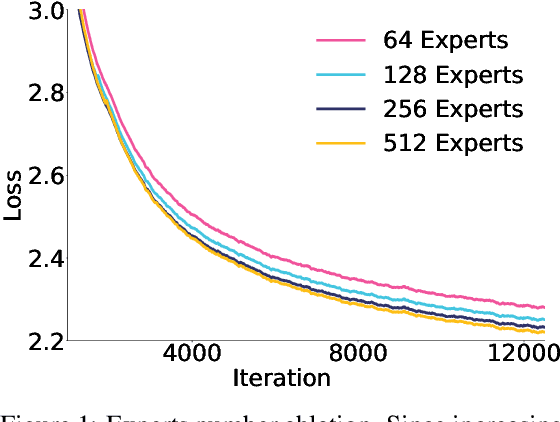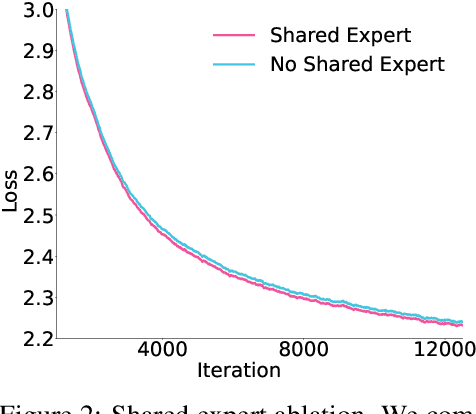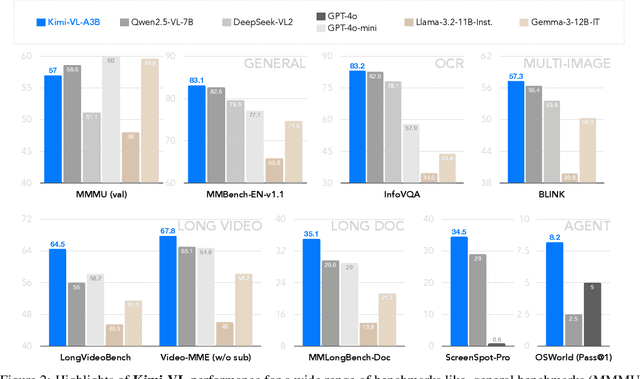Tao Yu
OpenCUA: Open Foundations for Computer-Use Agents
Aug 12, 2025Abstract:Vision-language models have demonstrated impressive capabilities as computer-use agents (CUAs) capable of automating diverse computer tasks. As their commercial potential grows, critical details of the most capable CUA systems remain closed. As these agents will increasingly mediate digital interactions and execute consequential decisions on our behalf, the research community needs access to open CUA frameworks to study their capabilities, limitations, and risks. To bridge this gap, we propose OpenCUA, a comprehensive open-source framework for scaling CUA data and foundation models. Our framework consists of: (1) an annotation infrastructure that seamlessly captures human computer-use demonstrations; (2) AgentNet, the first large-scale computer-use task dataset spanning 3 operating systems and 200+ applications and websites; (3) a scalable pipeline that transforms demonstrations into state-action pairs with reflective long Chain-of-Thought reasoning that sustain robust performance gains as data scales. Our end-to-end agent models demonstrate strong performance across CUA benchmarks. In particular, OpenCUA-32B achieves an average success rate of 34.8% on OSWorld-Verified, establishing a new state-of-the-art (SOTA) among open-source models and surpassing OpenAI CUA (GPT-4o). Further analysis confirms that our approach generalizes well across domains and benefits significantly from increased test-time computation. We release our annotation tool, datasets, code, and models to build open foundations for further CUA research.
Kwai Keye-VL Technical Report
Jul 02, 2025Abstract:While Multimodal Large Language Models (MLLMs) demonstrate remarkable capabilities on static images, they often fall short in comprehending dynamic, information-dense short-form videos, a dominant medium in today's digital landscape. To bridge this gap, we introduce \textbf{Kwai Keye-VL}, an 8-billion-parameter multimodal foundation model engineered for leading-edge performance in short-video understanding while maintaining robust general-purpose vision-language abilities. The development of Keye-VL rests on two core pillars: a massive, high-quality dataset exceeding 600 billion tokens with a strong emphasis on video, and an innovative training recipe. This recipe features a four-stage pre-training process for solid vision-language alignment, followed by a meticulous two-phase post-training process. The first post-training stage enhances foundational capabilities like instruction following, while the second phase focuses on stimulating advanced reasoning. In this second phase, a key innovation is our five-mode ``cold-start'' data mixture, which includes ``thinking'', ``non-thinking'', ``auto-think'', ``think with image'', and high-quality video data. This mixture teaches the model to decide when and how to reason. Subsequent reinforcement learning (RL) and alignment steps further enhance these reasoning capabilities and correct abnormal model behaviors, such as repetitive outputs. To validate our approach, we conduct extensive evaluations, showing that Keye-VL achieves state-of-the-art results on public video benchmarks and remains highly competitive on general image-based tasks (Figure 1). Furthermore, we develop and release the \textbf{KC-MMBench}, a new benchmark tailored for real-world short-video scenarios, where Keye-VL shows a significant advantage.
MetricHMR: Metric Human Mesh Recovery from Monocular Images
Jun 11, 2025Abstract:We introduce MetricHMR (Metric Human Mesh Recovery), an approach for metric human mesh recovery with accurate global translation from monocular images. In contrast to existing HMR methods that suffer from severe scale and depth ambiguity, MetricHMR is able to produce geometrically reasonable body shape and global translation in the reconstruction results. To this end, we first systematically analyze previous HMR methods on camera models to emphasize the critical role of the standard perspective projection model in enabling metric-scale HMR. We then validate the acceptable ambiguity range of metric HMR under the standard perspective projection model. Finally, we contribute a novel approach that introduces a ray map based on the standard perspective projection to jointly encode bounding-box information, camera parameters, and geometric cues for End2End metric HMR without any additional metric-regularization modules. Extensive experiments demonstrate that our method achieves state-of-the-art performance, even compared with sequential HMR methods, in metric pose, shape, and global translation estimation across both indoor and in-the-wild scenarios.
A Cooperative Aerial System of A Payload Drone Equipped with Dexterous Rappelling End Droid for Cluttered Space Pickup
May 26, 2025Abstract:In cluttered spaces, such as forests, drone picking up a payload via an abseil claw is an open challenge, as the cable is likely tangled and blocked by the branches and obstacles. To address such a challenge, in this work, a cooperative aerial system is proposed, which consists of a payload drone and a dexterous rappelling end droid. The two ends are linked via a Kevlar tether cable. The end droid is actuated by four propellers, which enable mid-air dexterous adjustment of clawing angle and guidance of cable movement. To avoid tanglement and rappelling obstacles, a trajectory optimization method that integrates cable length constraints and dynamic feasibility is developed, which guarantees safe pickup. A tether cable dynamic model is established to evaluate real-time cable status, considering both taut and sagging conditions. Simulation and real-world experiments are conducted to demonstrate that the proposed system is capable of picking up payload in cluttered spaces. As a result, the end droid can reach the target point successfully under cable constraints and achieve passive retrieval during the lifting phase without propulsion, which enables effective and efficient aerial manipulation.
Scaling Computer-Use Grounding via User Interface Decomposition and Synthesis
May 19, 2025Abstract:Graphical user interface (GUI) grounding, the ability to map natural language instructions to specific actions on graphical user interfaces, remains a critical bottleneck in computer use agent development. Current benchmarks oversimplify grounding tasks as short referring expressions, failing to capture the complexity of real-world interactions that require software commonsense, layout understanding, and fine-grained manipulation capabilities. To address these limitations, we introduce OSWorld-G, a comprehensive benchmark comprising 564 finely annotated samples across diverse task types including text matching, element recognition, layout understanding, and precise manipulation. Additionally, we synthesize and release the largest computer use grounding dataset Jedi, which contains 4 million examples through multi-perspective decoupling of tasks. Our multi-scale models trained on Jedi demonstrate its effectiveness by outperforming existing approaches on ScreenSpot-v2, ScreenSpot-Pro, and our OSWorld-G. Furthermore, we demonstrate that improved grounding with Jedi directly enhances agentic capabilities of general foundation models on complex computer tasks, improving from 5% to 27% on OSWorld. Through detailed ablation studies, we identify key factors contributing to grounding performance and verify that combining specialized data for different interface elements enables compositional generalization to novel interfaces. All benchmark, data, checkpoints, and code are open-sourced and available at https://osworld-grounding.github.io.
Pangu Ultra MoE: How to Train Your Big MoE on Ascend NPUs
May 07, 2025



Abstract:Sparse large language models (LLMs) with Mixture of Experts (MoE) and close to a trillion parameters are dominating the realm of most capable language models. However, the massive model scale poses significant challenges for the underlying software and hardware systems. In this paper, we aim to uncover a recipe to harness such scale on Ascend NPUs. The key goals are better usage of the computing resources under the dynamic sparse model structures and materializing the expected performance gain on the actual hardware. To select model configurations suitable for Ascend NPUs without repeatedly running the expensive experiments, we leverage simulation to compare the trade-off of various model hyperparameters. This study led to Pangu Ultra MoE, a sparse LLM with 718 billion parameters, and we conducted experiments on the model to verify the simulation results. On the system side, we dig into Expert Parallelism to optimize the communication between NPU devices to reduce the synchronization overhead. We also optimize the memory efficiency within the devices to further reduce the parameter and activation management overhead. In the end, we achieve an MFU of 30.0% when training Pangu Ultra MoE, with performance comparable to that of DeepSeek R1, on 6K Ascend NPUs, and demonstrate that the Ascend system is capable of harnessing all the training stages of the state-of-the-art language models. Extensive experiments indicate that our recipe can lead to efficient training of large-scale sparse language models with MoE. We also study the behaviors of such models for future reference.
ELGAR: Expressive Cello Performance Motion Generation for Audio Rendition
May 07, 2025Abstract:The art of instrument performance stands as a vivid manifestation of human creativity and emotion. Nonetheless, generating instrument performance motions is a highly challenging task, as it requires not only capturing intricate movements but also reconstructing the complex dynamics of the performer-instrument interaction. While existing works primarily focus on modeling partial body motions, we propose Expressive ceLlo performance motion Generation for Audio Rendition (ELGAR), a state-of-the-art diffusion-based framework for whole-body fine-grained instrument performance motion generation solely from audio. To emphasize the interactive nature of the instrument performance, we introduce Hand Interactive Contact Loss (HICL) and Bow Interactive Contact Loss (BICL), which effectively guarantee the authenticity of the interplay. Moreover, to better evaluate whether the generated motions align with the semantic context of the music audio, we design novel metrics specifically for string instrument performance motion generation, including finger-contact distance, bow-string distance, and bowing score. Extensive evaluations and ablation studies are conducted to validate the efficacy of the proposed methods. In addition, we put forward a motion generation dataset SPD-GEN, collated and normalized from the MoCap dataset SPD. As demonstrated, ELGAR has shown great potential in generating instrument performance motions with complicated and fast interactions, which will promote further development in areas such as animation, music education, interactive art creation, etc.
Kimi-VL Technical Report
Apr 10, 2025



Abstract:We present Kimi-VL, an efficient open-source Mixture-of-Experts (MoE) vision-language model (VLM) that offers advanced multimodal reasoning, long-context understanding, and strong agent capabilities - all while activating only 2.8B parameters in its language decoder (Kimi-VL-A3B). Kimi-VL demonstrates strong performance across challenging domains: as a general-purpose VLM, Kimi-VL excels in multi-turn agent tasks (e.g., OSWorld), matching flagship models. Furthermore, it exhibits remarkable capabilities across diverse challenging vision language tasks, including college-level image and video comprehension, OCR, mathematical reasoning, and multi-image understanding. In comparative evaluations, it effectively competes with cutting-edge efficient VLMs such as GPT-4o-mini, Qwen2.5-VL-7B, and Gemma-3-12B-IT, while surpassing GPT-4o in several key domains. Kimi-VL also advances in processing long contexts and perceiving clearly. With a 128K extended context window, Kimi-VL can process diverse long inputs, achieving impressive scores of 64.5 on LongVideoBench and 35.1 on MMLongBench-Doc. Its native-resolution vision encoder, MoonViT, further allows it to see and understand ultra-high-resolution visual inputs, achieving 83.2 on InfoVQA and 34.5 on ScreenSpot-Pro, while maintaining lower computational cost for common tasks. Building upon Kimi-VL, we introduce an advanced long-thinking variant: Kimi-VL-Thinking. Developed through long chain-of-thought (CoT) supervised fine-tuning (SFT) and reinforcement learning (RL), this model exhibits strong long-horizon reasoning capabilities. It achieves scores of 61.7 on MMMU, 36.8 on MathVision, and 71.3 on MathVista while maintaining the compact 2.8B activated LLM parameters, setting a new standard for efficient multimodal thinking models. Code and models are publicly accessible at https://github.com/MoonshotAI/Kimi-VL.
V2V3D: View-to-View Denoised 3D Reconstruction for Light-Field Microscopy
Apr 10, 2025Abstract:Light field microscopy (LFM) has gained significant attention due to its ability to capture snapshot-based, large-scale 3D fluorescence images. However, existing LFM reconstruction algorithms are highly sensitive to sensor noise or require hard-to-get ground-truth annotated data for training. To address these challenges, this paper introduces V2V3D, an unsupervised view2view-based framework that establishes a new paradigm for joint optimization of image denoising and 3D reconstruction in a unified architecture. We assume that the LF images are derived from a consistent 3D signal, with the noise in each view being independent. This enables V2V3D to incorporate the principle of noise2noise for effective denoising. To enhance the recovery of high-frequency details, we propose a novel wave-optics-based feature alignment technique, which transforms the point spread function, used for forward propagation in wave optics, into convolution kernels specifically designed for feature alignment. Moreover, we introduce an LFM dataset containing LF images and their corresponding 3D intensity volumes. Extensive experiments demonstrate that our approach achieves high computational efficiency and outperforms the other state-of-the-art methods. These advancements position V2V3D as a promising solution for 3D imaging under challenging conditions.
MotionPRO: Exploring the Role of Pressure in Human MoCap and Beyond
Apr 07, 2025Abstract:Existing human Motion Capture (MoCap) methods mostly focus on the visual similarity while neglecting the physical plausibility. As a result, downstream tasks such as driving virtual human in 3D scene or humanoid robots in real world suffer from issues such as timing drift and jitter, spatial problems like sliding and penetration, and poor global trajectory accuracy. In this paper, we revisit human MoCap from the perspective of interaction between human body and physical world by exploring the role of pressure. Firstly, we construct a large-scale human Motion capture dataset with Pressure, RGB and Optical sensors (named MotionPRO), which comprises 70 volunteers performing 400 types of motion, encompassing a total of 12.4M pose frames. Secondly, we examine both the necessity and effectiveness of the pressure signal through two challenging tasks: (1) pose and trajectory estimation based solely on pressure: We propose a network that incorporates a small kernel decoder and a long-short-term attention module, and proof that pressure could provide accurate global trajectory and plausible lower body pose. (2) pose and trajectory estimation by fusing pressure and RGB: We impose constraints on orthographic similarity along the camera axis and whole-body contact along the vertical axis to enhance the cross-attention strategy to fuse pressure and RGB feature maps. Experiments demonstrate that fusing pressure with RGB features not only significantly improves performance in terms of objective metrics, but also plausibly drives virtual humans (SMPL) in 3D scene. Furthermore, we demonstrate that incorporating physical perception enables humanoid robots to perform more precise and stable actions, which is highly beneficial for the development of embodied artificial intelligence. Project page is available at: https://nju-cite-mocaphumanoid.github.io/MotionPRO/
 Add to Chrome
Add to Chrome Add to Firefox
Add to Firefox Add to Edge
Add to Edge